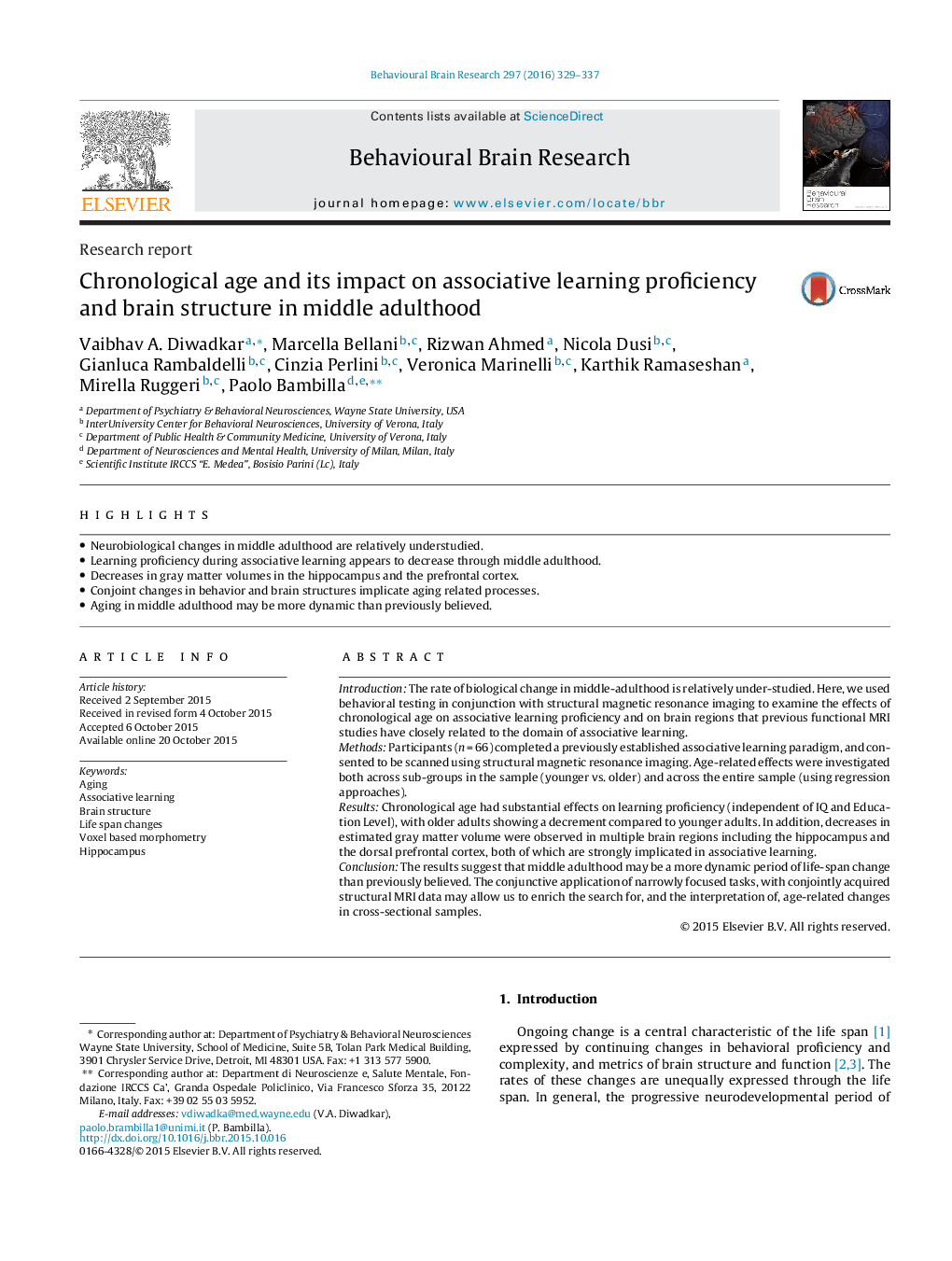| کد مقاله | کد نشریه | سال انتشار | مقاله انگلیسی | نسخه تمام متن |
|---|---|---|---|---|
| 6256430 | 1612935 | 2016 | 9 صفحه PDF | دانلود رایگان |
- Neurobiological changes in middle adulthood are relatively understudied.
- Learning proficiency during associative learning appears to decrease through middle adulthood.
- Decreases in gray matter volumes in the hippocampus and the prefrontal cortex.
- Conjoint changes in behavior and brain structures implicate aging related processes.
- Aging in middle adulthood may be more dynamic than previously believed.
IntroductionThe rate of biological change in middle-adulthood is relatively under-studied. Here, we used behavioral testing in conjunction with structural magnetic resonance imaging to examine the effects of chronological age on associative learning proficiency and on brain regions that previous functional MRI studies have closely related to the domain of associative learning.MethodsParticipants (n = 66) completed a previously established associative learning paradigm, and consented to be scanned using structural magnetic resonance imaging. Age-related effects were investigated both across sub-groups in the sample (younger vs. older) and across the entire sample (using regression approaches).ResultsChronological age had substantial effects on learning proficiency (independent of IQ and Education Level), with older adults showing a decrement compared to younger adults. In addition, decreases in estimated gray matter volume were observed in multiple brain regions including the hippocampus and the dorsal prefrontal cortex, both of which are strongly implicated in associative learning.ConclusionThe results suggest that middle adulthood may be a more dynamic period of life-span change than previously believed. The conjunctive application of narrowly focused tasks, with conjointly acquired structural MRI data may allow us to enrich the search for, and the interpretation of, age-related changes in cross-sectional samples.
Journal: Behavioural Brain Research SreeTestContent1 - Volume 297, 15 January 2016, Pages 329-337
